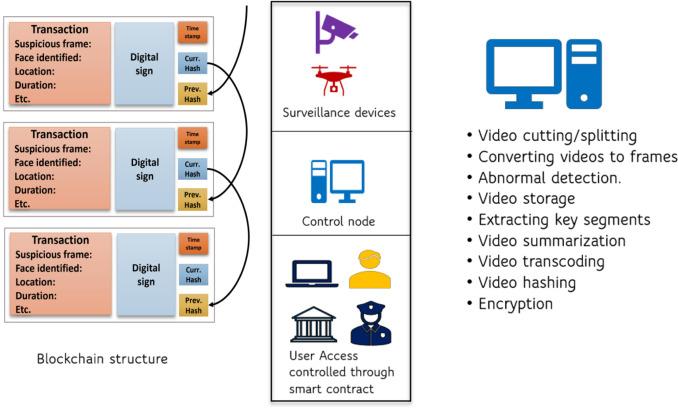How Blockchain Is Transforming Qualification Verification: Secure and Transparent Credentials
Qualification verification has long been a complex challenge for academic institutions, employers, and individuals. From forged certificates to time-consuming manual checks,organizations face meaningful hurdles in ensuring the authenticity of academic and professional credentials. However,the emergence of blockchain technology is revolutionizing how qualifications are issued,stored,and verified. In this article, we explore how blockchain is transforming qualification verification, creating a world of secure and transparent digital credentials.
Understanding Blockchain Qualification Verification
Blockchain technology is a distributed ledger system that stores data in a decentralized, immutable, and transparent manner. When applied to qualification verification,blockchain allows for credentials—whether academic degrees,vocational certificates,or professional licenses—to be issued and recorded in a way that can’t be altered or forged.
- Decentralized architecture: Credentials are recorded on a distributed network, reducing reliance on a single authority.
- Immutability: Once data is added, it cannot be changed or deleted, ensuring the permanent validity of records.
- Openness: Employers and other stakeholders can verify credentials instantly with full visibility.
This combination of security and transparency promises a new era of trust and efficiency in qualification verification—often called blockchain credentialing or blockchain-powered digital certificates.
The Benefits of Blockchain-Based Credential Verification
- Enhanced Security: Blockchain’s cryptographic features make it nearly impossible to forge or tamper with digital credentials.
- Instant Verification: Employers, educational institutions, or licensing boards can verify qualifications in seconds, reducing administrative burden.
- Global Accessibility: Digital blockchain certificates can be accessed and shared worldwide, facilitating global mobility and cross-border hiring.
- Ownership and Control: Individuals own and control their credentials (“self-sovereign identity”), making it easy to share authorized proof of qualification.
- Cost Efficiency: Reduces costs for issuing, storing, and verifying traditional paper-based certificates.
- Privacy: Only authorized users can access sensitive facts, ensuring data protection and compliance with privacy regulations.
Key Use Cases for Blockchain Credential Verification
- Academic Certificates: Universities issuing degrees to students using blockchain systems.
- Professional Licenses: Medical boards, engineering councils, and other regulatory bodies verifying professional status.
- Workplace Skills: Employers validating industry certifications and training achievements via blockchain networks.
- Micro-Credentials and Badges: Digital badges for short courses and skill endorsements secured via blockchain.
How Blockchain Qualification Verification works
The process for blockchain-based credential verification typically involves the following steps:
- Issuance: An accredited institution (e.g., a university) generates a digital credential.
- recording: The digital credential is securely recorded on a blockchain network.
- Ownership: The recipient (student or professional) receives a digital wallet or link containing their permanent verifiable credential.
- Verification: Employers or third parties use a blockchain explorer, app, or simple QR code to instantly validate the credential’s authenticity and details.
This eliminates manual calls, paperwork, and delays that traditionally plague background checks and employment screenings.
Real-World Case Studies: Blockchain Credentialing in Action
The University of Nicosia (Cyprus):
In 2014, The University of Nicosia became the first university to issue blockchain-verified degrees. Using the Bitcoin blockchain, graduates receive a cryptographically signed PDF certificate and a transaction identifier. Employers and other institutions can check the certificate’s validity online, instantly confirming legitimacy.
MIT’s Digital Diplomas:
The Massachusetts Institute of Technology (MIT) has embraced blockchain credentialing by issuing digital diplomas to graduates via Blockcerts. These tamper-proof diplomas allow students to easily share their qualifications with employers around the world.
World Economic Forum and accenture:
In partnership with leading organizations,the WEF has piloted projects leveraging blockchain for skills verification and workforce mobility,simplifying processes for refugees and migrants to prove their credentials and enter new labor markets.
Practical Tips for Implementing Blockchain-Based Credential Verification
- Partner with Trusted Providers: Work with established blockchain credentialing platforms such as Blockcerts, Learning Machine, or Accredible.
- Educate Stakeholders: Ensure students, employers, and administrators understand how blockchain certificates work.
- Start with Pilot Projects: Roll out pilot programs for a department, course, or industry partnership before full-scale adoption.
- Address Regulatory Compliance: Consider data privacy laws like GDPR and ensure robust consent management for users.
- Promote Interoperability: Aim for solutions that can be recognized across institutions, industries, and borders (open standards are key).
First-Hand Experiences: Voices from the Field
“With blockchain diplomas, our recruitment process has become so much faster. We no longer need to worry about fake degrees or long phone calls to foreign universities. One click, and we know the certificate is real.”
— Human Resources Manager, Global Tech Firm
“As a recent graduate, it’s empowering to own and manage my accreditation online. I can apply for jobs across borders knowing employers trust my blockchain diploma.”
— Elena, Computer Science Graduate, Europe
Challenges and Considerations
While blockchain offers groundbreaking advantages for secure and transparent qualification verification, there are several considerations:
- Adoption Barriers: Not all institutions and employers are ready to switch to digital credentials.
- Scalability: Blockchains must handle large volumes of credentials without slowing down.
- Standards and Recognition: Global standards are still emerging for interoperability between different blockchain credential platforms.
- Initial Implementation Costs: Setting up blockchain credentialing systems may need upfront investments in technology and training.
Despite these challenges, the rapid advancement and growing adoption of blockchain in education and employment sectors indicate a positive future.
conclusion: Building Trust with Blockchain Credentials
Blockchain technology is ushering in a new era of trust, security, and efficiency for qualification verification and digital credentials. By eliminating forgery risks and enabling instant, transparent verification, blockchain-powered credentials benefit students, professionals, educational institutions, and employers alike. As adoption grows and standards emerge, blockchain is set to become the gold standard for secure and transparent qualification verification worldwide.
Are you ready to embrace blockchain for your organization’s credentialing needs? the future of qualification verification is here—and it’s transparent, secure, and digitally unstoppable.

